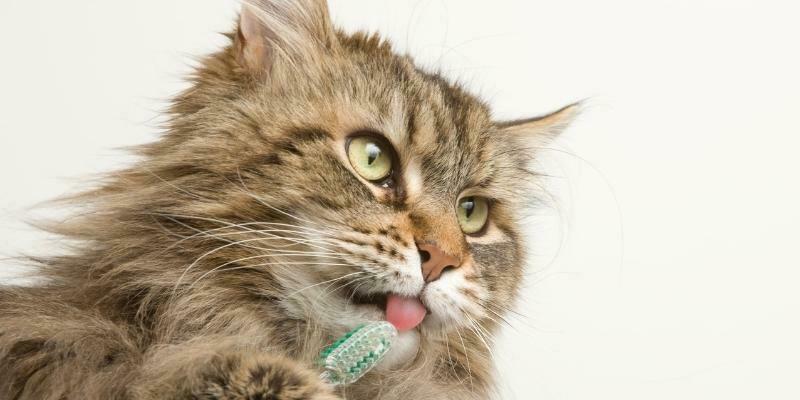We talk a lot about dental disease in pets, and how we can treat it to maintain the comfort and health of our patients. But it’s also important that owners know how to check their pet’s teeth at home, so you can monitor for any issues between vet checks. Here is our guide on how to check your pet’s dental health!
1. Don’t wait for your pet to stop eating
Occasionally, when we diagnose a pet with significant dental disease requiring treatment, owners will comment “But [pet’s name] can’t be uncomfortable – they’re still eating!”. In most cases, pets will continue eating despite severe dental disease, as their alternative is to starve to death! These animals may or may not, however, show some subtler preferences for certain foods, such as soft foods rather than dry biscuits or chews.
2. Sniff your pet’s breath
Before you handle your pet’s mouth, start by smelling their breath. If their breath smells unpleasant, there is most likely some degree of dental disease (or another medical issue) going on.
3. Flip the lip!
Try to gently lift your pet’s lip near the front of their mouth, and then again near the corner of their lip. A healthy mouth will be comfortable, with white teeth and pink gums (sometimes with areas of normal black gum pigment too).
Yellow/brown discolouration of the teeth or redness along the gum edge indicates that your pet most likely has some dental disease.
4. Open your pet’s mouth
If your pet will allow it, try to gently open their mouth so you can look inside for any broken teeth, lumps or wounds.
We recommend checking your pet’s teeth every three-to-four weeks at home. If you see any changes suggestive of dental disease, it’s best to book an appointment with our vets for further assessment. We’ll give you the ‘tooth’ about your pet’s dental health!

